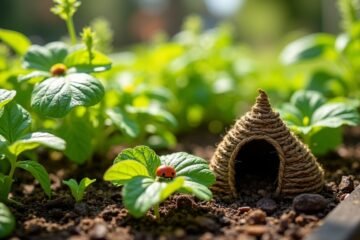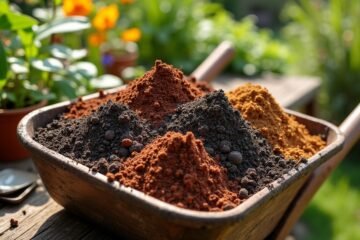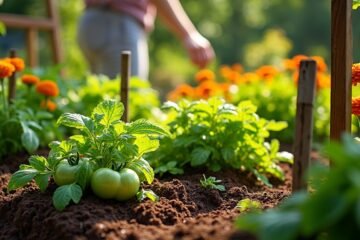Transforming tiny areas into thriving gardens can be an exciting adventure! First, find a sunny spot that gets 6-8 hours of light—think of it as your plants’ spa retreat! Use rot-resistant wood like cedar for raised beds, or go modern with galvanized steel. Get creative with vertical gardens, adding trellises for climbing plants or hanging planters for added flair. With the right soil mix, your plants will flourish like stars at a garden party! Want to discover more tips?
Selecting the Right Location for Your Raised Beds

When you’re ready to dig in and create your raised beds, picking the perfect spot is like choosing a favorite ice cream flavor—it can make all the difference! Think about sunlight exposure first; most plants crave six to eight hours of direct sunlight, so scout a sunny corner of your yard. Picture basking vegetables getting their daily dose of vitamin D—like you on a warm beach! Next, consider drainage. Nobody wants a swampy garden! Look for a spot with slightly sloped ground, allowing excess water to flow away. A local rain shower can transform your plot into paradise, but puddles? Not so much. By carefully selecting your location, you’re setting up your garden for a thriving season of growth!
Choosing Materials for Your Raised Garden Bed
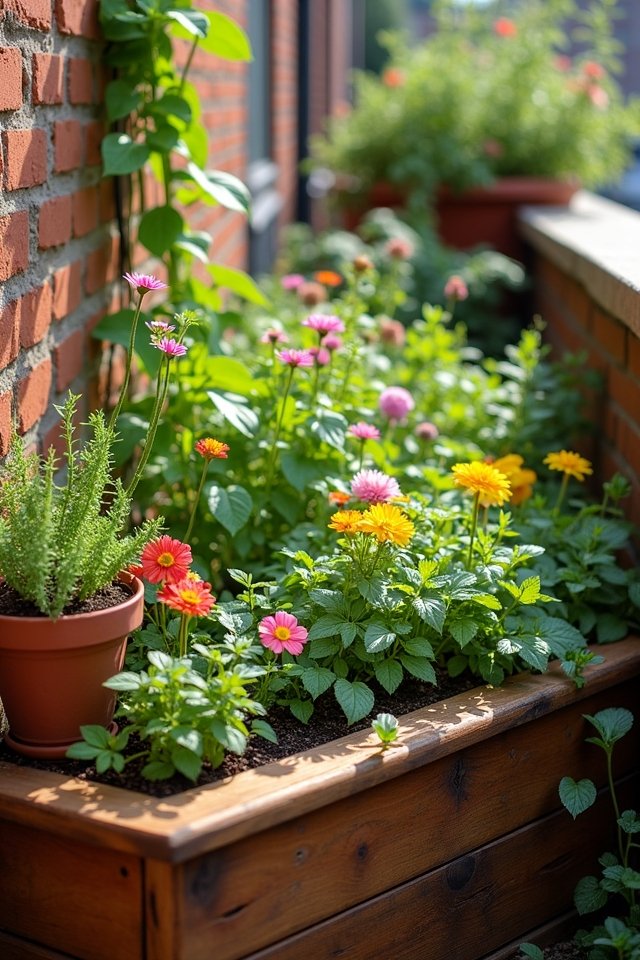
Now that you’ve found the perfect spot for your raised beds, it’s time to think about what materials will bring your garden to life! Consider wood options like cedar or redwood; they’re naturally rot-resistant and evoke a rustic charm. Imagine the scent of fresh timber while your vegetables thrive! But don’t overlook metal choices, either—galvanized steel is sleek and modern, adding an industrial flair. Plus, it’s durable and can withstand the seasons, just like your gardening enthusiasm! Need a splash of color? Painted metal could brighten up your space! Whichever you choose, make sure it’s food-safe and environmentally friendly. After all, your garden deserves only the best, right? Jump in, and let your creativity blossom!
Designing Efficient Layouts for Tiny Gardens
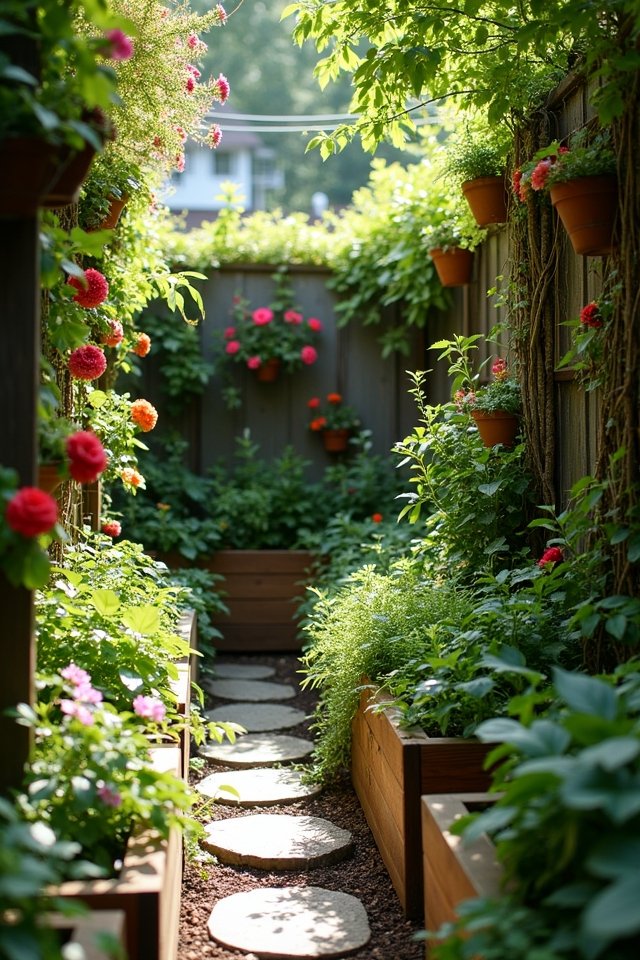
Even though you might feel constrained by limited space, designing an efficient layout for your tiny garden can release a world of possibilities! With the right garden zoning and layout optimization, you can turn that patch of earth into an enticing oasis! Just imagine your tiny space flourishing with life! Here’s how to maximize your garden’s potential:
- Vertical gardening: Use trellises or hanging planters to save ground space!
- Container gardening: Blend colors and textures with pots of varying sizes!
- Pathways: Create defined walkways to guide your eye and foot!
- Group plants: Cluster compatible plants for lush, thriving spaces!
- Multi-functional elements: Think benches that double as planters!
Dive in and release your tiny garden’s hidden charm! Happy gardening!
Soil Selection and Preparation Techniques
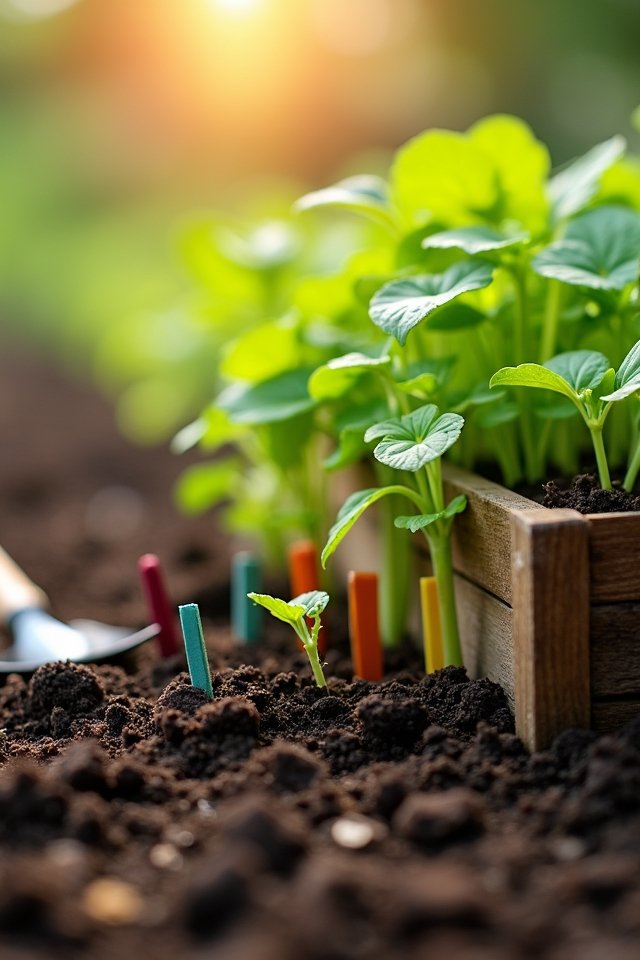
Soil, the foundation of your tiny garden, is like the magic potion that fuels your plants’ growth! Picking the right soil types is a game-changer. Do you want fluffy, well-draining soil for those vibrant herbs? Or perhaps you need rich, loamy soil for your colorful veggies? Don’t forget to explore amendment techniques! Adding compost can supercharge your soil, providing essential nutrients. A sprinkle of perlite or vermiculite keeps things airy, ensuring root health. Think of your soil as a cozy bed for plants—who wouldn’t want that? Mix in organic matter, like leaf mold, and watch your garden soar! So, roll up your sleeves, welcome the dirt, and create the ultimate sanctuary for your garden dreams! Ready, set, grow!
Companion Planting for Maximizing Yield
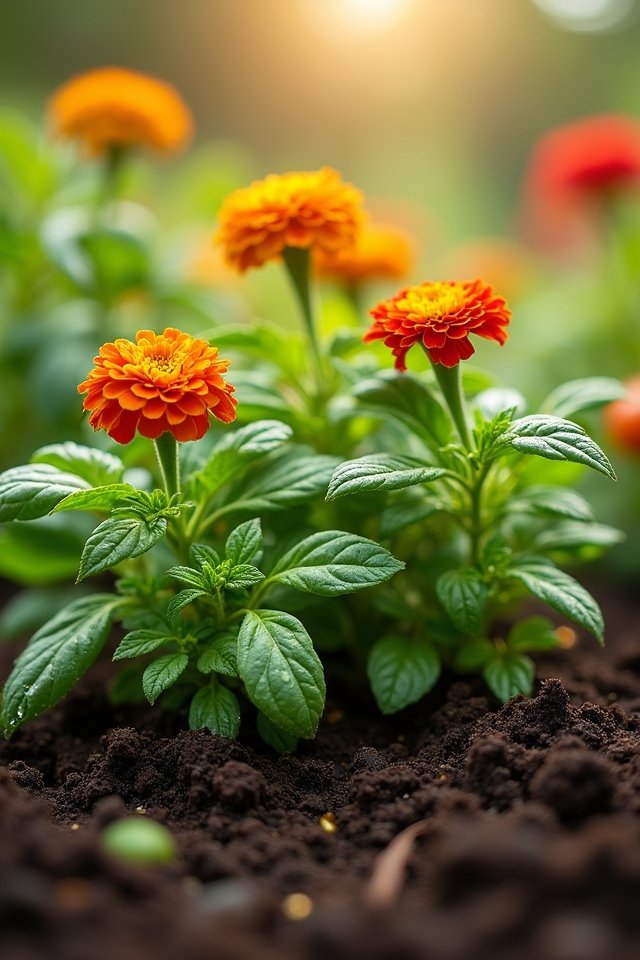
Ready to take your garden to the next level? Companion planting is your ticket to an abundant, vibrant space! By pairing plants wisely, you can create a dynamic ecosystem, attracting beneficial insects and boosting flavors. Consider these fascinating combinations:
- Basil with tomatoes—basil enhances flavor and repels pests!
- Marigolds alongside squash—these colorful blooms act as powerful pest deterrents.
- Nasturtiums near cabbages—they lure aphids away from your cabbages!
- Mint with peas—herb companions like mint not only deter pests but add aromatic joy.
- Carrots with onions—this duo confuses pests, keeping your carrots safe!
Experiment with these combinations and watch your tiny garden flourish with vigor! Who knew synergy could taste so delicious?
Maintenance Tips for Small Raised Bed Gardens
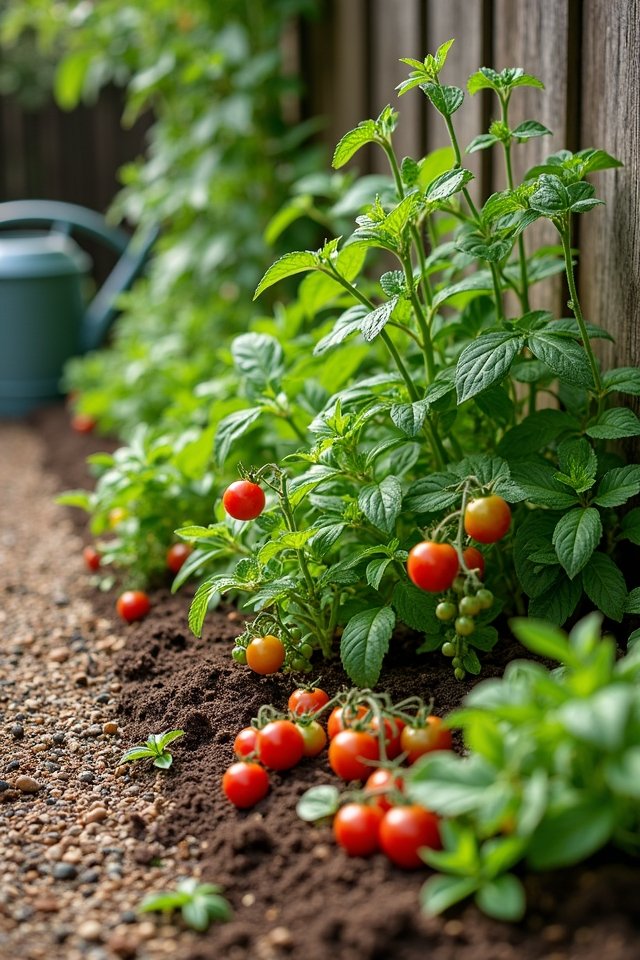
Tending to a small raised bed garden is like nurturing a delicate pet; it needs your attention and love to thrive! First off, let’s talk watering strategies. You don’t want your garden to go thirsty, so check moisture levels regularly. A simple finger test works wonders—just stick your finger in the soil! Next, adopt innovative pest control. Use natural predators, like ladybugs, or create barriers with plants like marigolds to ward off pesky intruders. Keep your garden clean and free of debris; it’s like tidying your space to promote a vibrant atmosphere! Remember, happy plants equal happy gardeners! So, roll up your sleeves, pour in some dedication, and watch your tiny paradise flourish. Happy gardening!
Creative Vertical Gardening Solutions
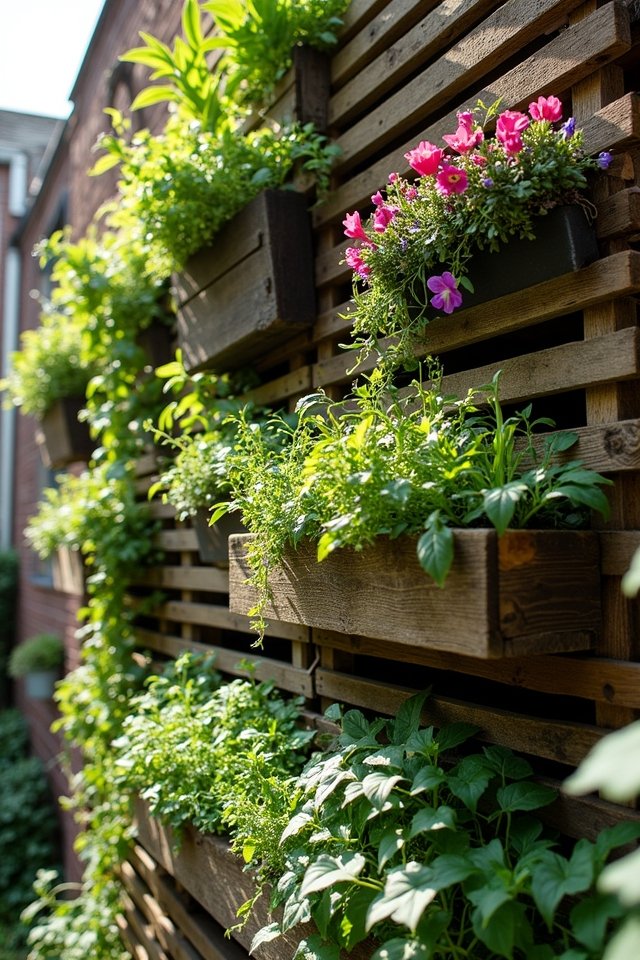
If you’ve ever dreamed of turning your walls into living murals, creative vertical gardening solutions are your ticket to a lush, green paradise! Imagine vibrant colors and fragrant herbs sprouting right before your eyes. You can do it with some innovative techniques like:
- Hanging planters that cascade like waterfalls of greenery.
- DIY wall gardens that transform old pallets into artistic displays.
- Vertical racks that turn your unused corners into blossoming nooks.
- Pocket gardens filled with succulent treasures for a unique touch.
- A tiered system for growing fresh veggies at eye level!
Get ready to wow your friends and enjoy your space in a whole new way. Who knew squeezing in a garden could be this easy and fun? Keep dreaming big!
Frequently Asked Questions
What Types of Plants Are Best for Small Spaces?
Got a tiny space? You’re in luck! Think of your garden as a vertical tapestry, where drought-resistant plants like succulents and creeping thyme hang like jewels! You can space them close, creating vibrant layers of greens and colors! Why not try a wall planter? It’s the secret trick for maximizing space! Imagine this: lush herbs cascading down and fresh veggies thriving like stars at a premiere! Isn’t that just a garden dream come true?
How Do I Manage Pests in Tiny Gardens?
Managing pests in your tiny garden can feel like a battle, but it doesn’t have to! Try natural pest control methods, like introducing ladybugs to munch on aphids. Companion planting works wonders too. Plant basil next to tomatoes, and watch how the basil keeps those pesky bugs at bay! Remember, it’s like having a garden superhero team in action! Keep it green and healthy, and wave goodbye to bothersome pests! 🌿
Can I Grow Vegetables in Containers?
Absolutely, you can grow vegetables in containers! Imagine plump tomatoes basking in the sun or crisp lettuce ready for your salad! Start with container gardening by choosing a diverse vegetable selection, like peppers, herbs, or radishes, that thrive in smaller spaces. Just make sure to use quality soil and water regularly. Isn’t it exciting to think your tiny balcony could turn into a mini farmer’s market? Get planting, and enjoy fresh flavors right at home!
What Is the Best Watering Method for Small Gardens?
Oh sure, watering a small garden should be super simple—just aim and spray, right? Not quite! For best results, consider drip irrigation. This method delivers water directly to the roots, like a cozy blanket snuggling your plants. Plus, establish a consistent watering schedule, like Clockwork Orange with veggies! It helps prevent overwatering and keeps your garden perky. Trust me, your plants will thank you for the delightful shower of love!
How Do I Extend the Growing Season in Tiny Gardens?
You can extend your growing season by creating a cozy microclimate! Use row covers or cloches to trap warmth like a snug blanket over your plants. Pair this with selecting frost-resistant varieties, which are like the superheroes of your tiny garden. Also, consider building a small hoop house; it’s like a sunroom for your veggies! Isn’t it exciting to think of fresh harvests even when the weather turns chilly? Let’s get growing!
